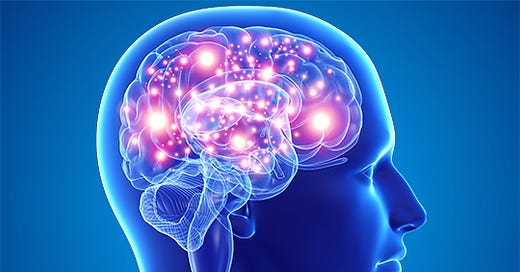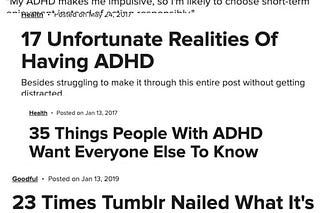
Even Psychiatrists Hate the Chemical Imbalance Model
[FREE VERSION] The model originates in pharma commercials, not science. We must push back against it.
This is a guest post by Nigel Jaffe, who studies clinical psychology. He hopes to help save it from itself.
THIS IS A FREE VERSION OF A PAID POST. TO READ THE REST, SUBSCRIBE
Prescription drug ads are as predictable as they are pervasive. Their formula, deployed via print ads, TV commercials, and subway billboards, is simple. First, they call out a common emotional problem—irritability, worry, mental fatigue—before repackaging it as one of many potential symptoms of, say, Generalized Anxiety Disorder. Then, they introduce a medication that promises to remedy a mental disorder you didn’t even know you had. (Don’t forget to ask your doctor if the drug is right for you.)
Big Pharma has spent more than a billion dollars on direct-to-consumer ads each year since 1997, buying the ability to help dictate how we understand the nature of mental health and illness. Consumers learn from these ads that our struggles are common and can be medically addressed. We’re reassured that our everyday suffering can be chalked up to a disorder of brain chemistry, or a “chemical imbalance,” but one that can in principle be rectified. In a handful of sentences, the ad offers both problem and solution, disorder and cure.
The theory that mental disorders result from faulty brain wiring, bad genes, or neurochemical imbalances is so firmly ingrained in American culture that it’s easy to assume scientists consider it conventional wisdom. The possibility that there’s a biological key to eliminating depression or schizophrenia is sexy. Since we know that mental illness is undeniably biological to some extent, and that medications provide relief, in varying degrees, for millions of people, we want to believe that scientists are on the right track toward predicting, curing, or preventing mental illness.
And yet, despite decades of effort by academic and pharmaceutical researchers armed with huge streams of cash, every quest to find the hidden biomarker or gene at the root of mental illness has fallen short of its goals. In fact, the “chemical imbalance” theory of mental illness has played a deeply problematic role in psychiatry since the field’s inception, as historian Anne Harrington chronicles in Mind Fixers. The story of psychiatry’s increasingly desperate search for biological answers, Harrington argues, has been one in which “it overreached, overpromised, overdiagnosed, overmedicated and compromised its principles.”
Today, the biomedical theory of mental illness is as popular as ever. But many psychiatrists—people whose profession revolves around the idea that neurobiological interventions can treat psychological issues—are surprisingly wary of this way of thinking.
As part of my coursework in sociology this spring, I interviewed five psychiatrists with diverse training experiences and theoretical orientations, and each of them disavowed the “chemical imbalance” theory for one reason or another. All five reported never having used that phrase while working with a patient. But they still encounter it daily, implicit in how patients think of their own suffering. And whether they like it or not, it’s at the root of how psychiatrists regard their patients, too.
The anthropologist Tanya Luhrmann, who spent half a decade conducting fieldwork in psychiatric residency programs and hospitals for her book Of Two Minds, calls out how the biomedical model can dehumanize people experiencing chronic mental illness. When someone has a psychological issue that can be successfully treated, it can absolutely be beneficial and destigmatizing to call it a medical problem, distancing the person from the disorder. But what if it can’t be treated? Luhrmann argues:
“To say that someone’s reasoning and feeling are diseased, when the disease never goes away, is to say that she is not fully human… If we as a society understand life-threatening and incapacitating psychiatric problems as only medical, we deprive people of hope when their medication does not fully work. We deprive them of their sense of mastery over themselves, of full personhood in the world, of their ability to see themselves as thinking and feeling, just differently from other people.”
Under the medical model, a chronic diagnosis implies that there’s something irrevocably wrong with you. But there are other ways of understanding what we call mental health and illness. One possibility, which Luhrmann hints at here, is to remove the value judgment: to believe that someone with a chronic diagnosis functions differently, not worse, than someone considered healthy. Another option is to posit that the problem isn’t your brain chemistry— it’s the world around you.
I saw Luhrmann’s worst fears realized in Cara, a child and adolescent psychiatrist………………………………….
THIS IS A FREE VERSION OF A PAID POST. TO READ THE REST, SUBSCRIBE










